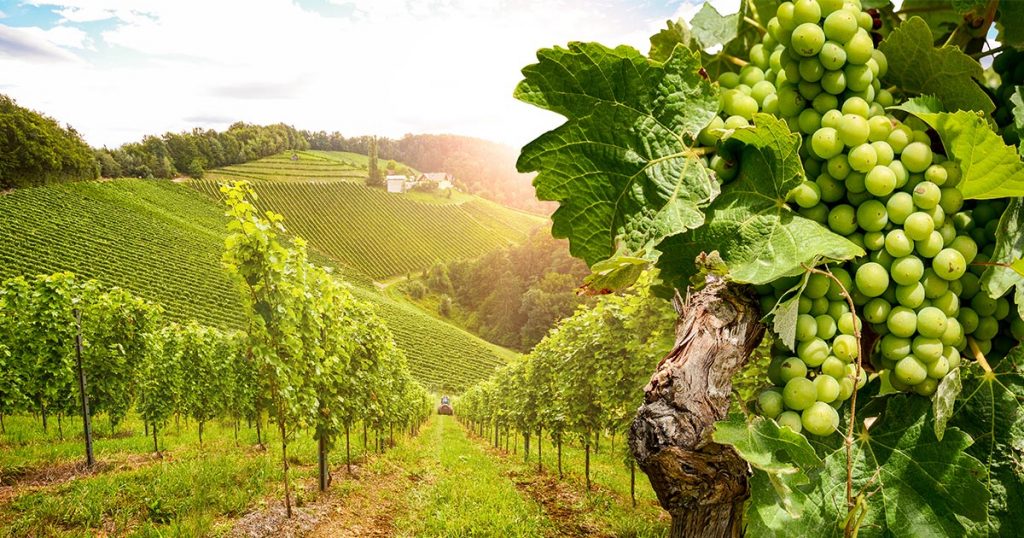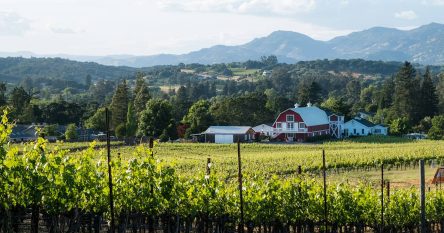With closed tasting rooms and wine supply chain problems resulting from COVID-19, this year’s “California Grape Crush Report”, which was the result of the 2019 harvest which occurred in October and November, was positive. However, it’s also anyone’s guess as to what will happen once California reopens. The coronavirus shutdown has boosted wine sales in stores and from delivery services, which may help with oversupply problems in the short term, but it’s difficult to say what next year’s report will show. (The next report will come out in April 2021 but it will be the results of this year’s harvest which will occur in the fall.) All our vintners and other industry professionals are working to help ask and answer questions about what Napa Valley’s future wine landscape will look like.
Here are some highlights from the “Grape Crush Report.” Napa Valley is the premier grape-growing district, so we can look in detail at the varietals and pricing for the 2019 grape season.
Highlights of the California Grape Crush Report
 As is always the case, District 4 (Napa Valley) led the statewide grape crush price average per ton with $5,769.31, a 3.4 percent increase over 2018 prices. Our neighbors in Sonoma County came in at No. 2 at an average of $2,845.92 per ton of grapes, but these totals are also combined with Mendocino County grapes. The combined Mendocino and Sonoma districts’ per-ton prices increased by 1 percent over 2018 prices.
As is always the case, District 4 (Napa Valley) led the statewide grape crush price average per ton with $5,769.31, a 3.4 percent increase over 2018 prices. Our neighbors in Sonoma County came in at No. 2 at an average of $2,845.92 per ton of grapes, but these totals are also combined with Mendocino County grapes. The combined Mendocino and Sonoma districts’ per-ton prices increased by 1 percent over 2018 prices.
All major varietals in Napa County increased in average price per ton in 2019.
- Cabernet sauvignon increased from $7,925 to $7,941
- Pinot noir increased from $2,707 to $2,773
- Merlot increased from $3,760 to $4,055
- Zinfandel went from $4,013 to $4,339
- Syrah increased from $3,956 to $4,086
- Chardonnay jumped from $2,917 to $3,032
Sauvignon blanc rounded out the seven most-frequently grown varietals, increasing in average price per ton from $2,279 to $2,423. White wine grapes saw more modest price-per-ton average increases than red wine grapes, with the exception of cabernet sauvignon. Zinfandel grapes increased by more than 8 percent, and other red varietals that increased significantly included merlot, which rose more than 6 percent, and syrah, which rose by 3.1 percent.
A world of difference between Napa’s ‘Grape Crush Report’ and generic wine grapes from other regions
Napa Valley wines are world-renowned, and the “Grape Crush Report” totals reflect that. The mass-market wines made from grapes in other regions command far lower average prices per ton. For example, Wine District 13, which encompasses Fresno, Madera, Kings and Tulare counties, grew and sold the largest number of grapes crushed in California in 2019, but the average price paid for their mass-market grapes was $301.10 per ton. Comparing these numbers, you can see that boxed and generic wines are typically made from industrial grapes that command an average of 2 to 3 percent of the price of Napa Valley’s grapes, no matter what the variety.
Where and how Napa Valley wines will be sold remains in question
The COVID-19 shutdown changed many things in Napa Valley, first and foremost by the closure of tasting rooms and restaurants. Silicon Valley Bank projects that a “best case” scenario for wineries with tasting rooms is to experience a 50 percent loss through the end of 2020.
We are all concerned about how the reopening will proceed and how soon wineries can return to thriving financial health and serving customers. I was not surprised at one emerging trend: Although tasting rooms and travel were no longer available, people did not forget about fine wine. Sales through grocers and wine delivery services increased greatly during the COVID-19 lockdown. Many of the most popular wineries did virtual tastings and wine and food pairings on Facebook and had remarkable sales results.
Oversupply problems may not be as bad as feared
Silicon Valley Bank’s May “State of the Industry” report highlighted challenges and opportunities for Napa Valley winegrowers. The “California Grape Crush Report” showed a significant oversupply of grapes that predated the COVID-19 crisis. However, I wonder if it may not be a blessing in disguise that some of our wineries reduced production last fall. Overproduction in 2018 impacted the market. Slowing orders for grapes from some of our growers last fall could potentially become a net positive once the full impact of the COVID-19 shutdown has run its course.
Will wine grape prices hold for 2020 and future seasons?
Following record high crop yields in 2018, some Napa Valley growers reported having difficulty in finding a home for their grapes last fall. Looking at overall statewide numbers for 2019, 3.9 million tons of grapes were grown and sold to be crushed for wine, an 8.4 percent decrease over 2019 totals. Red wine varietals held their price points or saw slight increases, but white varietals saw price drops per ton outside of Napa Valley. Branding and being cognizant of consumer preferences is more critical now than ever for Napa Valley winegrowers and our related businesses.
It’s hard to predict an upward trend for grape prices in the upcoming season. The growth in wine purchases in stores and through delivery services will certainly continue. According to Silicon Valley Bank’s panel of experts, older consumers also are likely to continue to stay home and drink wine.
The information coming in from Nielsen reports on alcoholic beverage sales, in general, is fascinating. Wine sales in retail stores were up 31.1 percent from March 7th to May 16th this year, second only to sales of spirits, which saw a 36.1 percent increase. The early consensus on these buying trends seems to be that consumers are preparing and eating more leisurely meals at home. Of course, this has occurred because restaurants were closed, but wine has seen growth beyond a simple replacement for the wine that consumers would have ordered with their restaurant meals before the shutdown. In addition, baby boomers who have been big consumers of fine wines, especially those on the high end, are retiring and buying less wine, and millennials are more interested in cocktails and beer, partially because Napa Valley wines are too expensive for their budgets.
Napa Valley’s beauty will endure
My sense is that once it is considered to be safer than it is now, people will be eager to travel following months of shutdown. We all want our wine country businesses to return to profitable operations. We already have many outdoor tasting and dining operations, and since our wineries have expansive grounds, social distancing will not pose a serious challenge. As tasting rooms reopen and restaurants develop safe ways to continue to serve customers, we will all feel a sense of relief and return to our highly-coveted lifestyle which is focused around our fabulous restaurants and wineries. The highest price known to be paid for a ton of Cabernet Sauvignon grapes in 2019 was $50,000. It will be interesting to see what the highest price will be for the 2020 Harvest.




